
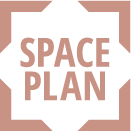

The huge boom of height-adjustable tables is already in Slovakia. How to get maximum and use the potential of a height adjustable table?
1. 12. 2017
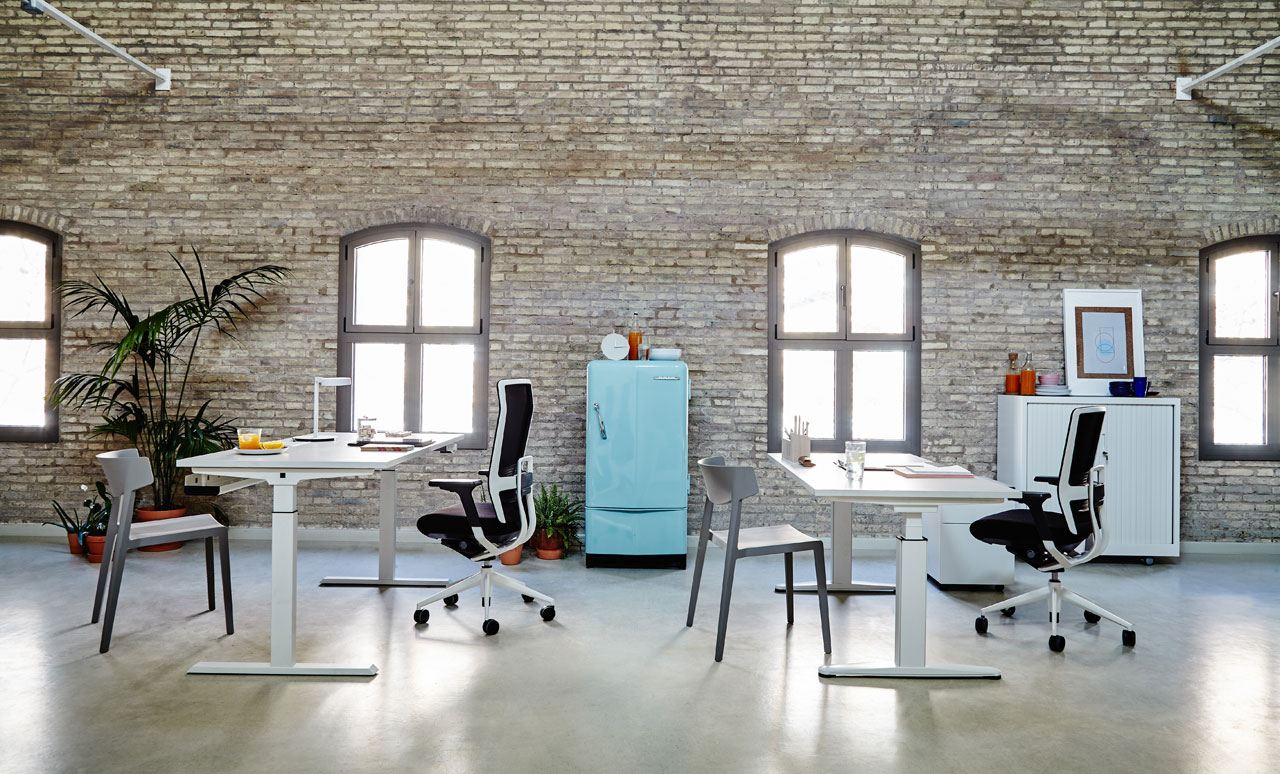
Encouraging physical activity should not just be limited to sitting at desks. Height-adjustable desks offer the opportunity to work while standing (standing-sitting dynamics).
However this does require a certain amount of deliberate action and the cognitive drive to change posture, which is why this function is not used in practice by many.
To integrate more physical activity into office work, general re-organisation of office spaces is a more effective solution.
How do we solve this problem and get the most out of this new trend?Let's look at some complex solutions that include the efficient use of height-adjustable tables.
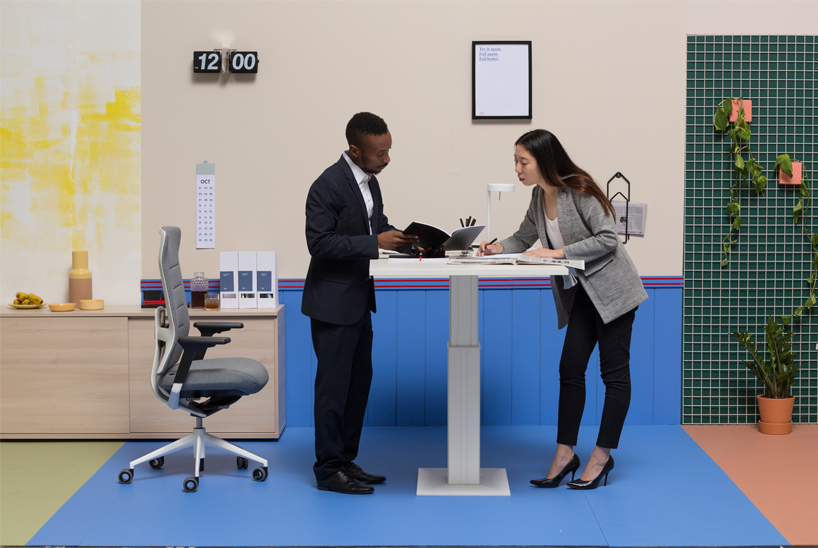
Flexibility and dynamism are embraced in modern office forms like the activity-based workplace. This concept originally circulated in the 1990s in the Netherlands and is currently a hot topic at major companies the world over.
Office processes are no longer simply centred around static spaces that employees are tied to. Depending on the task and activity involved, office buildings offer different environments.
At the same time, this movement concept also supports personal interaction in the company – and therefore not just health, but also social cohesion and informal opportunities to share expertise. The more often rooms and environments are changed and the more varied these changes are, the more effectively all the senses are stimulated.
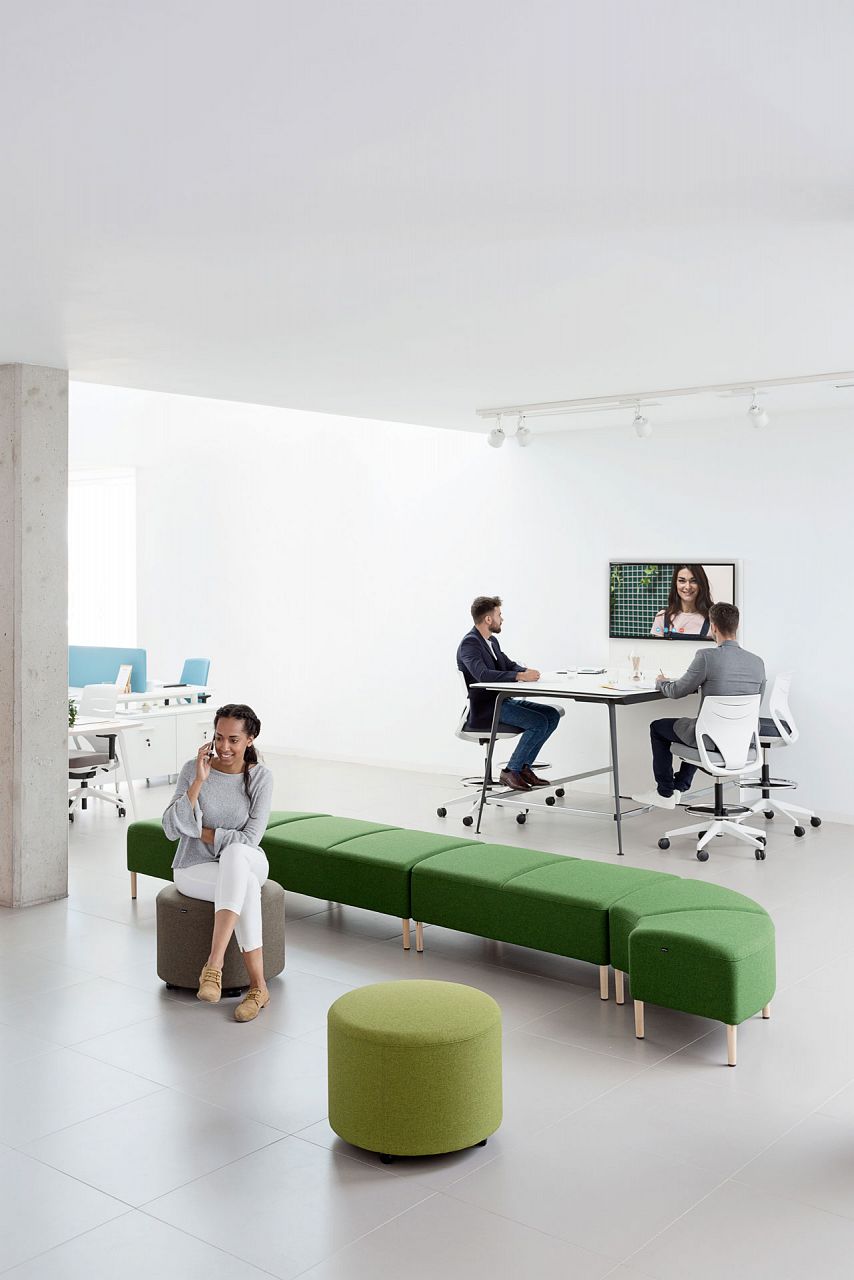
General reorganization of the office is a basic and much more effective solution. In order to effectively use new trends, they must be incorporated as part of the overall spatial planning strategy.
Using a height-adjustable table as a stand-alone solution requires attention and time. Therefore we advise to consult beforehand an experienced architect who will design your entire office so active movement will be integrated.
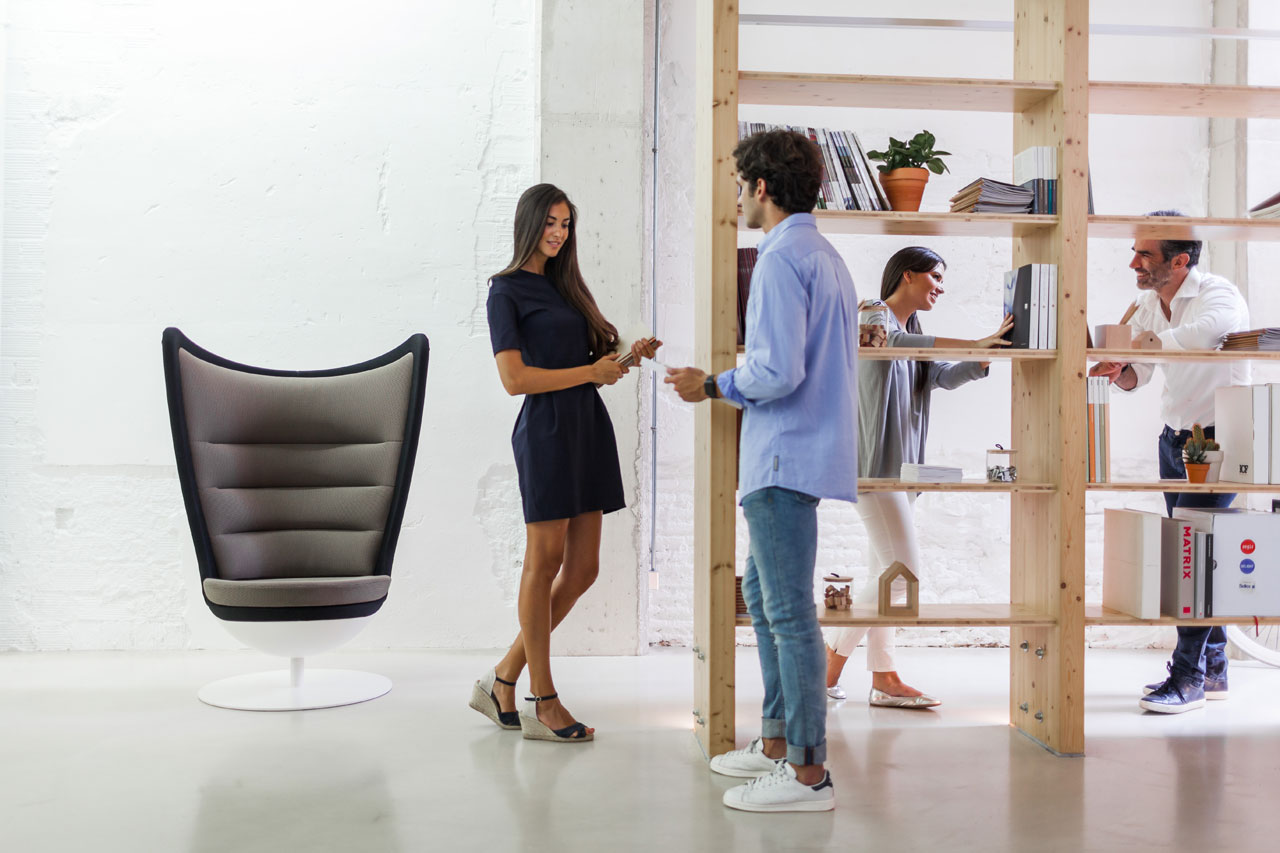
It all starts by restructuring working processes to provide for a change between sedentary and standing activities.
Whether it’s a question of placing the wastepaper basket in the corner of the room, or the phone on a lectern, the most important task is to stimulate people to get up.
But this doesn’t just apply to people working at desks. Meetings and conferences often drag on – and mostly on seating that encourages virtually no movement at all.
Anyone switching from sitting-down to standing-up meetings kills two birds with one stone. The change of posture is good for the body and work is more productive during standing-up meetings
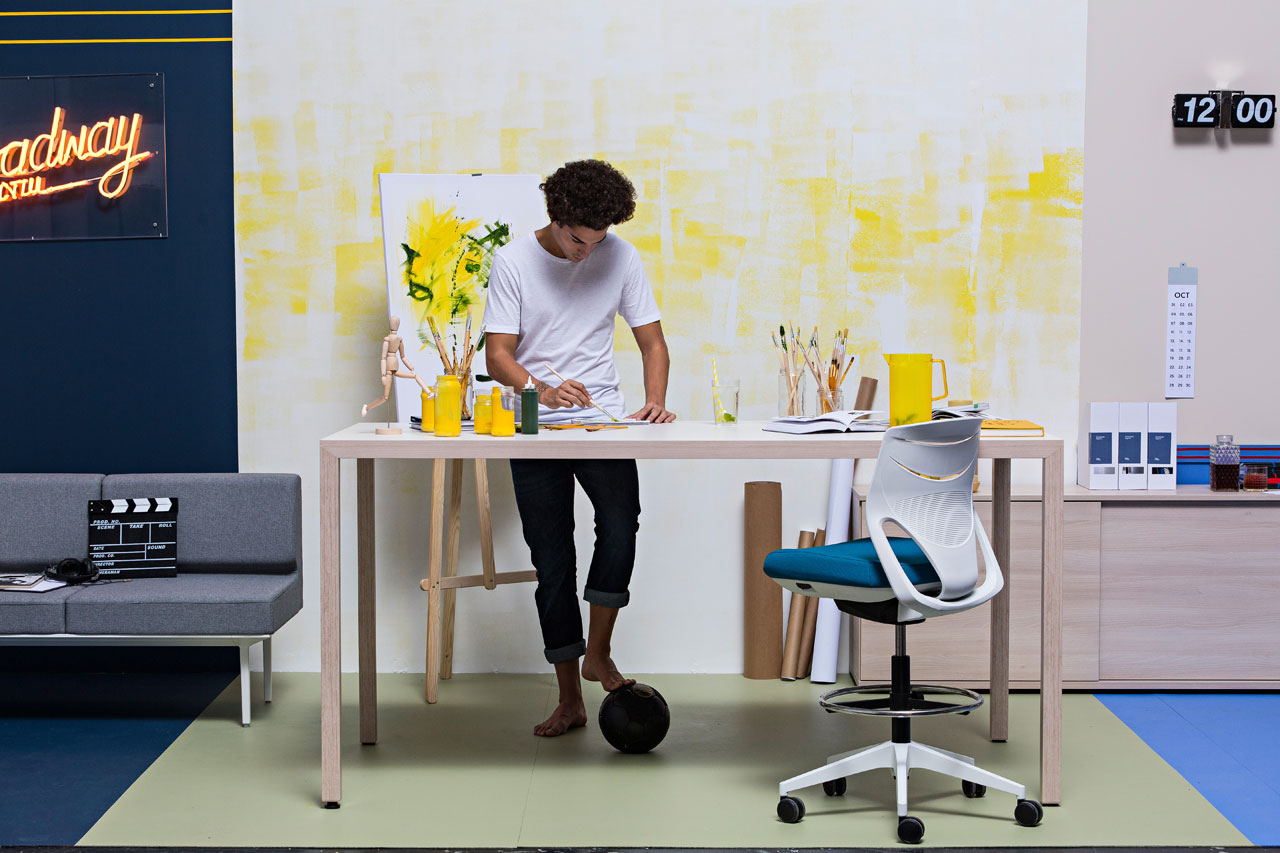
However, because standing up for long periods of time is even more tiring than sitting down for a long time, fully flexible one-legged leaning aids at lecterns or high tables combine intuitive keep-fit exercises with relaxing the body.
As an analysis of “Stitz” proved, temporary use of a dynamic leaning aid counteracts problems with balance and improves muscular co-ordination. The more frequently Stitz was used in addition to an office chair, the better the development of the test persons’ measurement figures
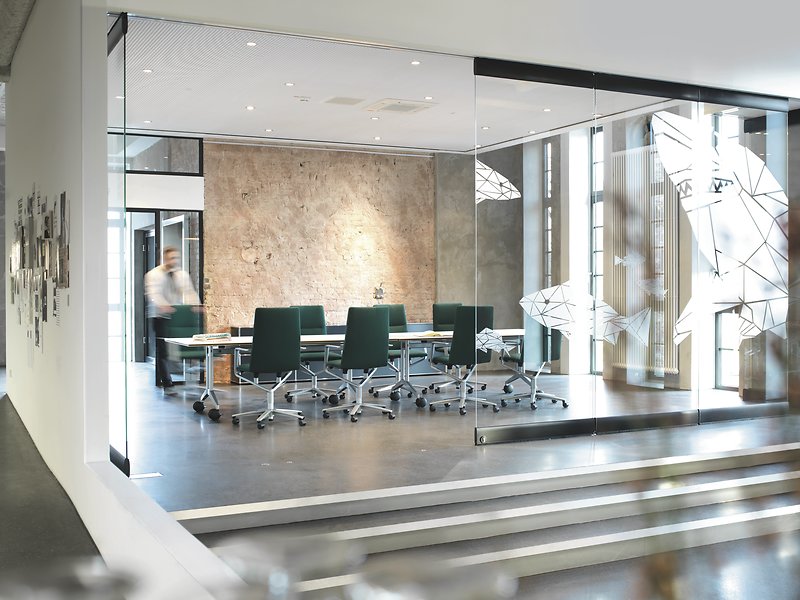
Foldable, transportable tables, pinboards, flipcharts and stackable chairs are the ideal tools that are set up by the people themselves.
Another welcome side effect is better space usage because the room’s more versatile. Consequently, usage is more frequent and extra manpower’s not required for alterations.
Similarly to dynamic seating, significant efficiency improvements in this case go hand in hand with health aspects.
- Start up with an active office concept
- Let yourself design a spaceplan according this concept
- Use the height-adjustable table as part of the concept, not only as a separate element
- Use the height-adjustable chairs as part of the work area
- For fast meetings with height-adjustable tables, use special furniture that supports temporary sitting
- Allow people to be activite during room preparation
- Design meeting rooms so employees can walk around and choose different types of seating